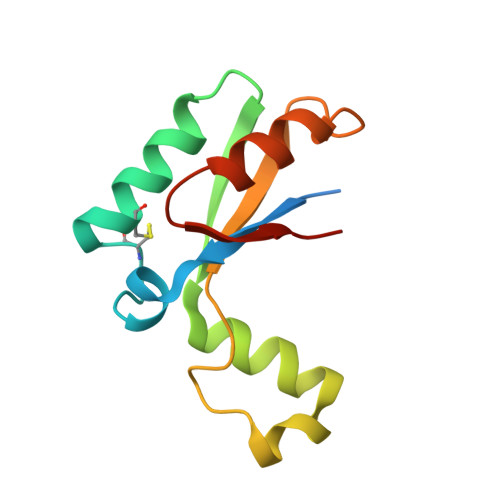Mycobacterium tuberculosis FtsX extracellular domain activates the peptidoglycan hydrolase, RipC.
Mavrici, D., Marakalala, M.J., Holton, J.M., Prigozhin, D.M., Gee, C.L., Zhang, Y.J., Rubin, E.J., Alber, T.(2014) Proc Natl Acad Sci U S A 111: 8037-8042
- PubMed: 24843173
- DOI: https://doi.org/10.1073/pnas.1321812111
- Primary Citation of Related Structures:
4N8N, 4N8O - PubMed Abstract:
Bacterial growth and cell division are coordinated with hydrolysis of the peptidoglycan (PG) layer of the cell wall, but the mechanisms of regulation of extracellular PG hydrolases are not well understood. Here we report the biochemical, structural, and genetic analysis of the Mycobacterium tuberculosis homolog of the transmembrane PG-hydrolase regulator, FtsX. The purified FtsX extracellular domain binds the PG peptidase Rv2190c/RipC N-terminal segment, causing a conformational change that activates the enzyme. Deletion of ftsEX and ripC caused similar phenotypes in Mycobacterium smegmatis, as expected for genes in a single pathway. The crystal structure of the FtsX extracellular domain reveals an unprecedented fold containing two lobes connected by a flexible hinge. Mutations in the hydrophobic cleft between the lobes reduce RipC binding in vitro and inhibit FtsX function in M. smegmatis. These studies suggest how FtsX recognizes RipC and support a model in which a conformational change in FtsX links the cell division apparatus with PG hydrolysis.
Organizational Affiliation:
QB3 Institute, California Institute for Quantitative Bioscience, and.
















